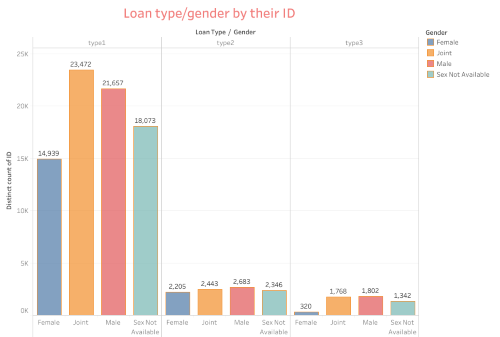Can AI Replace Cyber security jobs?

In today’s ever-evolving technological landscape, the role of artificial intelligence (AI) continues to expand, permeating various sectors and revolutionizing traditional practices but one important question is: Can AI Replace cybersecurity jobs? it is unlikely to completely replace the need for cyber security job, Although it can automatically perform specific tasks in Cyber security and will enhance their capabilities and improve threat detection and response rate.
This article delves into the intersection of AI and cybersecurity, exploring this dynamic relationship’s possibilities, challenges, and implications.
What are cybersecurity jobs?
Cybersecurity jobs are works done by Cybersecurity analysts and are usually the first line of defense against cybercrime. Network security analysts protect computer networks from network attacks and unauthorized access. They do this by trying to predict and defend against cyber threats and react when security vulnerabilities occur.
What is artificial intelligence (AI)
Artificial intelligence (AI), is the ability of a digital computer or computer-controlled robot to perform tasks usually related to intelligent creatures.
The term is often applied to projects that develop intellectual processes with human characteristics, such as reasoning, discovering meaning, generalizing, or the ability to learn from experience.
Since the development of digital computers in the 1940s, it has been proved that computers can be programmed to perform very complex tasks—such as discovering proofs of mathematical theorems or playing chess—very skillfully.
Nevertheless, despite the continuous progress of computer processing speed and memory capacity, there is currently no program that can match human flexibility in a wider range of fields or tasks that require a lot of daily knowledge
The Growing Role of AI in Technology
Artificial intelligence has emerged as a transformative force, driving innovation across industries. From healthcare to finance, AI-powered solutions are reshaping processes, optimizing efficiency, and unlocking new capabilities.
As organizations embrace AI technologies, the boundaries of what is possible continue to expand.
The Pivotal Role of Cybersecurity in the Digital Age
In an increasingly interconnected world, cybersecurity stands as a crucial safeguard against emerging threats.
With the proliferation of digital platforms and the exponential growth of data, protecting sensitive information and infrastructure has become paramount.
Cybersecurity not only defends against malicious actors but also preserves trust and ensures the integrity of digital ecosystems.
Understanding Cybersecurity
Defining Cybersecurity: What It Entails
Cybersecurity encompasses a multifaceted approach to safeguarding digital assets and systems from unauthorized access, disruption, or damage.
It encompasses a range of practices, including threat detection, risk mitigation, and incident response. At its core, cybersecurity seeks to uphold confidentiality, integrity, and availability in the digital realm.
The Evolution of Cyber Threats: From Simple to Sophisticated
Cyber threats have evolved in complexity and sophistication, mirroring advancements in technology. What once consisted of isolated attacks has evolved into coordinated campaigns orchestrated by skilled adversaries.
From malware and phishing scams to ransomware and advanced persistent threats (APTs), the threat landscape continues to evolve, presenting new challenges for cybersecurity professionals.
The High Stakes: Risks and Consequences of Cyber Attacks
The consequences of cyber attacks extend far beyond financial losses and operational disruptions. Breaches can erode trust, damage reputations, and compromise sensitive data, leading to regulatory penalties and legal repercussions.
Moreover, in critical sectors such as healthcare and infrastructure, cyber attacks can pose significant risks to public safety and national security.
The Promise of AI in Cybersecurity
Leveraging AI: Enhancing Detection and Prevention Efforts
Artificial intelligence holds immense potential in augmenting cybersecurity defenses by enabling proactive threat detection and rapid response.
Machine learning algorithms can analyze vast datasets, identify patterns indicative of malicious activity, and adapt to evolving threats in real-time.
By automating routine tasks and augmenting human analysts, AI strengthens the resilience of cybersecurity operations.
Automation in Action: Streamlining Security Operations
AI-driven automation streamlines security operations, enabling organizations to detect and mitigate threats more efficiently.
From endpoint protection to network monitoring, AI-powered solutions can autonomously identify and neutralize security incidents, minimizing response times and mitigating potential damage. By reducing manual intervention, automation allows cybersecurity teams to focus on strategic initiatives and high-priority tasks.
Scalability and Adaptability: Meeting the Demands of a Dynamic Threat Landscape
One of AI’s greatest strengths lies in its scalability and adaptability to evolving threats. As cyber-attacks grow in sophistication and frequency, AI-powered cybersecurity solutions can scale to analyze vast amounts of data and adapt to emerging threats in real time. Whether defending against zero-day exploits or combating insider threats, AI offers a dynamic defense mechanism capable of evolving alongside the threat landscape.
Challenges and Limitations
The Human Element: The Role of Expertise and Judgment
While AI enhances cybersecurity capabilities, the human element remains indispensable. Human expertise provides context, intuition, and critical thinking necessary for effective threat analysis and decision-making.
Cybersecurity professionals possess domain knowledge and situational awareness that complement AI-driven insights, enabling a holistic approach to cyber defense.
Ethical Considerations: Addressing Bias and Privacy Concerns
Ethical considerations loom large in the deployment of AI in cybersecurity. Bias inherent in training data can lead to skewed outcomes and discriminatory practices.
Moreover, AI-driven surveillance raises privacy concerns regarding the collection and use of personal data.
Addressing these ethical considerations requires transparency, accountability, and adherence to ethical principles in AI development and deployment.
False Positives and Negatives: Navigating the Pitfalls of AI Algorithms
AI algorithms are susceptible to false positives and false negatives, posing challenges for cybersecurity operations.
False positives can inundate analysts with spurious alerts, leading to alert fatigue and undermining trust in automated systems.
Conversely, false negatives can result in undetected threats slipping through defenses, exposing organizations to risk.
Balancing detection accuracy with false alarm rates is essential to optimizing AI-driven cybersecurity solutions.
AI vs. Human Intelligence
AI’s Advantages: Speed, Efficiency, and Pattern Recognition
AI excels in tasks requiring speed, efficiency, and pattern recognition, making it invaluable in cybersecurity operations.
Machine learning algorithms can rapidly analyze vast amounts of data, identify anomalies, and detect emerging threats with precision.
Moreover, AI-powered tools can automate repetitive tasks, freeing up human analysts to focus on strategic initiatives and complex investigations.
Human Expertise: Critical Thinking, Creativity, and Adaptability
Human intelligence offers unique advantages in cybersecurity, including critical thinking, creativity, and adaptability.
Cybersecurity professionals possess domain knowledge and contextual understanding that enable them to interpret nuanced threats and anticipate adversarial tactics.
Furthermore, human analysts can leverage creativity and intuition to uncover hidden patterns and devise novel strategies for threat mitigation.
Striking the Balance: The Synergy of AI and Human Capabilities
The optimal approach to cybersecurity leverages the complementary strengths of AI and human intelligence.
By combining AI-driven insights with human expertise, organizations can achieve a synergistic defense posture that maximizes detection accuracy and response effectiveness.
Collaboration between AI systems and human analysts fosters a symbiotic relationship that enhances cyber resilience and adaptability.
Case Studies and Examples
Real-World Applications: Success Stories in AI-Powered Cybersecurity
Numerous real-world examples demonstrate the efficacy of AI-powered cybersecurity solutions in thwarting cyber threats.
From anomaly detection and behavior analysis to threat hunting and incident response, AI technologies have proven instrumental in fortifying defenses and mitigating risks.
Case studies highlight the tangible benefits of AI integration, including reduced response times, increased threat visibility, and enhanced operational efficiency.
Learning from Failures: Instances Where AI Falls Short
Despite its promise, AI is not immune to shortcomings and limitations in cybersecurity applications. Instances of AI failures underscore the importance of accountability, transparency, and ongoing evaluation in AI development and deployment.
Whether due to adversarial attacks, algorithmic biases, or technical limitations, understanding AI’s limitations is essential to mitigating risks and optimizing its effectiveness in cybersecurity.
The Road Ahead
Future Trends: Innovations Shaping the Future of Cybersecurity
Looking ahead, several trends are poised to shape the future of cybersecurity. Advances in AI and machine learning will continue to drive innovation, enabling the development of more sophisticated threat detection and response capabilities.
Additionally, emerging technologies such as quantum computing and blockchain hold the potential to revolutionize cybersecurity paradigms, presenting both opportunities and challenges for defenders.
Collaboration and Cooperation: Fostering Partnerships between AI and Humans
Effective cybersecurity requires collaboration and cooperation between AI systems and human analysts.
By fostering partnerships and interdisciplinary collaboration, organizations can harness the collective intelligence of humans and machines to anticipate, detect, and mitigate cyber threats more effectively.
Building a culture of collaboration promotes knowledge sharing, innovation, and continuous improvement in cyber defense strategies.
Continuous Learning: The Importance of Adaptation and Evolution in Cyber Defense
In the dynamic landscape of cybersecurity, continuous learning is essential to staying ahead of evolving threats.
Organizations must invest in training and professional development to equip cybersecurity professionals with the skills and knowledge necessary to navigate complex challenges.
Moreover, embracing a culture of innovation and experimentation fosters resilience and adaptability, enabling organizations to evolve their cybersecurity strategies in response to emerging threats and technologies.
Conclusion
The intersection of artificial intelligence and cybersecurity represents a nexus of innovation and necessity in the digital age.
As AI technologies continue to advance, their integration into cybersecurity operations holds immense promise for enhancing threat detection, response capabilities, and overall resilience.
However, realizing this potential requires a nuanced understanding of AI’s capabilities, limitations, and ethical considerations.
While AI augments cybersecurity defenses with its speed, efficiency, and pattern recognition capabilities, human expertise remains indispensable in interpreting complex threats, exercising judgment, and addressing ethical concerns.
By striking a balance between AI-driven automation and human intelligence, organizations can harness the collective strengths of humans and machines to build robust and adaptive cyber defense strategies.
Looking ahead, collaboration and cooperation between AI systems and human analysts will be paramount in shaping the future of cybersecurity.
Embracing a culture of continuous learning, adaptation, and innovation is essential to staying ahead of evolving threats and leveraging emerging technologies to safeguard digital ecosystems.
In navigating the complex landscape of cybersecurity, one thing remains clear: the synergy of AI and human intelligence holds the key to building resilient defenses capable of safeguarding against the ever-evolving cyber threats of tomorrow.
By embracing this synergy and fostering collaboration across disciplines, organizations can effectively mitigate risks, protect critical assets, and preserve trust in an increasingly interconnected world.









